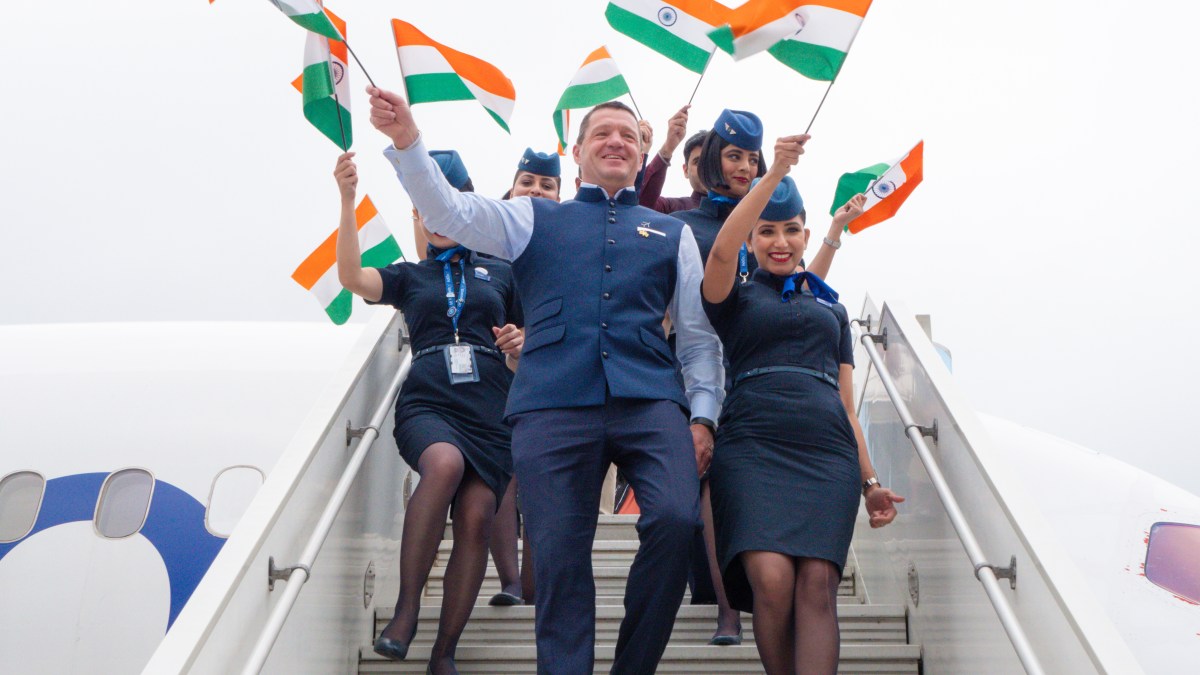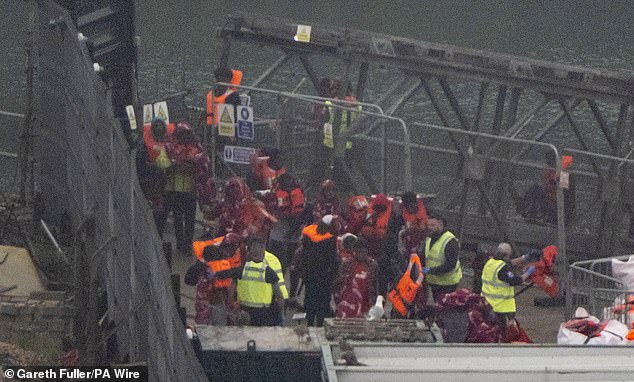IndiGo is an airline in a hurry, according to its chief executive, Pieter Elbers. I’ll say — the airline is the third-largest low-cost carrier in the world, flying to more than 130 destinations from India, and much like that country is on a ferocious growth trajectory. It has an order book of more than 900 planes — the fattest in the world, with one plane a week scheduled to be delivered until the end of the decade.
Even if you haven’t heard of the airline before now, chances are you’ll be familiar with its name soon. This week it launched its first long-haul European flight, between Manchester and Mumbai, India’s financial capital. I was at Manchester airport to wave off the inaugural flight and to talk to Elbers about his plans for the world’s fastest-growing airline.
IndiGo is the latest carrier to try the mid/long-haul low-cost model, although when we meet Elbers is keen to stress that it is not a bargain airline such as Ryanair; rather, it’s a more ambitious version of Norse (formed after the demise of Norwegian Air), which has a slim selection of less expensive routes from Europe to the US and South Africa. Elsewhere, the ultra-low-cost European carrier Wizz is flying from London to Saudi Arabia (seven hours, with food, baggage allowance and reclining seats costing extra); while the Malaysian-based AirAsia announced this month that it was eyeing cheap flights connecting the Gulf to Europe, including Gatwick.
After the Mumbai-Manchester route, a further “four to five” European destinations are planned this year, including Amsterdam (launched on July 2), Copenhagen and London in the winter (although Elbers won’t be drawn on which airport, my rupee is on Gatwick).
• 23 of the best places to visit in India
IndiGo 6E032 was the first direct flight from Manchester to India in more than a decade. For the crew, it was their first time working on a nine-hour flight — it is 4,500 miles between the two cities, compared with the 700-odd miles between Mumbai and Delhi that the airline plies about 20 times a day.
The flight to Mumbai takes nine hours
GETTY IMAGES
The three-times-a-week Manchester-Mumbai route, as well as IndiGo services to other European destinations, will be flown by six Boeing 787 Dreamliners leased from Norse until the first of its 60 Airbus A350s are delivered in 2027. “We didn’t want to wait for the A350s to arrive,” Elbers says. See? In a hurry.
“When I joined IndiGo in 2022 the ambition was to make it into a global aviation giant,” Elbers says, adding that it is a great opportunity to connect more Indian cities to destinations around the world. At first he focused on routes to cities in the Caucasus region (Almaty, Tashkent, Tbilisi), then east Africa (Kenya) and southeast Asia (Bali). But Europe — where he was previously based, running KLM — was always in his sights.
So what can passengers expect on board?
Although IndiGo started as a low-cost carrier and still follows that model for its domestic flights, the long-haul experience is probably best described as having a souped-up budget. In economy there are 282 seats in a 3-3-3 configuration; in the premium “Stretch” cabin, which is more like premium economy (note: no flatbeds), it’s roomier, with seats laid out as 2-3-2. A baggage allowance and meal service is included in the airline’s ticket prices, as they are for its low-cost domestic flights in India; alcoholic drinks are also included for Stretch passengers. There will be a focus on Indian products, including with the catering.
It’s cheap too. For example, on July 2, a one-way ticket from Manchester to Mumbai costs £288 in economy or £674 in Stretch, with the economy fare equating to about 6p a mile. A one-way fare for London to Mumbai with British Airways on the same date, including only cabin baggage, is £532.
Elbers is not bothered by labels when I ask whether IndiGo is a budget or hybrid carrier. “It’s not relevant,” he says. “What’s important is that we don’t have the complexity that the legacy carriers have, where you have to pay for each step along the way. IndiGo is a comprehensive, straightforward proposition.”
Pieter Elbers, second from left, says IndiGo is not a bargain airline such as Ryanair
Air safety was brought into sharp focus on July 12 when Air India flight 171 from Ahmedabad to Gatwick crashed shortly after take-off, killing 260 people, with the cause yet to be determined, and it’s fair to say that there is now a degree of nervousness about Indian carriers. Elbers won’t be drawn into talking about the impact of the crash on IndiGo’s operations, although the carrier is providing direct links at a time when Air India has cancelled a number of its UK routes. “There is a lot of focus and attention on what happened — rightfully so,” he says. “The Indian regulator has announced a set of additional steps to be taken, some specifically on aircraft. It’s important to wait for the outcome of the investigation.”
Elbers is similarly stoic about the uncertain geopolitical situation in the Middle East and the Tetris puzzle of airspace closures that stretch from Europe to Asia. “As an operator you have to deal with it,” he says. “When it comes to current airspace closures, for example for Indian carriers to not fly over Pakistan we have suspended two of our flights to central Asia, while flights from northern India to the Gulf are now 20 minutes longer.” He adds that if airspace closures persist, IndiGo “will adjust the network or adjust the prices”.
IndiGo’s expansion mirrors that of the country whose flag it bears — India is the world’s largest country in terms of population, as well as the fourth biggest economy, after China, the US and Germany. But despite rapid growth, tourism is sluggish, not helped by a complicated visa system — the latest figures show that in 2023 it had 9.5 million overseas visitors (Vatican City, the world’s smallest country, has about six million a year).
However, with increased connectivity comes an opportunity for European travellers to explore India beyond the gateways of Delhi and Mumbai and visit thrilling cities such as Hyderabad, Bangalore and Calcutta, as well as the beaches beyond Goa and national parks other than Ranthambore in Rajasthan, if the red tape surrounding the visa process can be addressed. Elbers is confident that the process will eventually get easier. “India is still unexplored,” he says. “The variety and beauty of the country is unmatched but relatively unknown.”
Closer to home there is little doubt about the impact that this new direct service to India will have on Manchester and the wider region in the north of England. Chris Woodroofe, the managing director of Manchester airport, says that the flights “will make a massive difference” to the fortunes of the area, while Vishakha Yaduvanshi, the Indian consul general in Manchester, says that they will “deepen ties between the UK and India”.
Back to Terminal 2 departures at Manchester, and at the ten check-in desks in row F the mood is buoyant — the inaugural Mumbai-Manchester service has touched down 25 minutes early. Passengers inch past balloon displays in the blue and silver IndiGo livery and families, couples and a few stray backpackers are handed mango sweets to celebrate. Almost three hours later, at 12.37pm, I watch as Flight 6E032 heads down the runway and banks right to begin its journey back to Mumbai.
With IndiGo’s aggressive ambitions, I doubt it’ll be long before I’m on board too.



